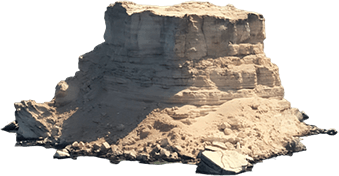- 23430000
- WustGO@alwusta.gov.om
- Haima Governorate - Sultanate of Oman

Community participation
Developing the identity of Alwusta Governorate
introduction
Alwusta Governorate is committed to activating community participation as a strategic tool for effective communication with citizens and residents, and enhancing their role in expressing their opinions, comments, and suggestions regarding government services and projects.
We believe that community engagement contributes to improving the quality of services, enhancing transparency, and building a spatial identity that reflects the aspirations of residents and supports the governorate's development process. This is in line with the directives of the wise leadership to consolidate a culture of participation and integration between government agencies and members of the community.
Objectives
- ● Enhancing community participation in evaluating government services and initiatives, which will result in improved performance.
- ● Support transparency in presenting local policies and decisions, and provide an opportunity for different viewpoints to be presented.
- ● Involving residents and interested parties in shaping the governorate’s development and cultural identity.
- ● Utilizing feedback to develop digital services (electronic portal and application).
- ● Establishing a culture of digital transformation by engaging users in improving their digital experience.
Circulars, decisions and policy
Developing the identity of Alwusta Governorate
The introduction:
As part of Alwusta Governorate's efforts to build a corporate identity that reflects its geographic, cultural, and developmental reality, a community survey is being conducted to gauge public perceptions of the governorate's visual and symbolic identity. This initiative aims to ensure that the new identity reflects community aspirations and strengthens its connection to the region.
Project objectives:
1- Involving the local community in shaping the visual identity of the governorate.
2- Identifying the prevailing perceptions and impressions about Alwusta Governorate.
3- Building a corporate identity stemming from local values and culture.
Community participation steps:
1- Launching the questionnaire: A questionnaire will be published through the governorate's digital communication channels to collect citizens' opinions on identity elements.
2- Data analysis: The posts will be analyzed to understand the priorities and impressions associated with the place.
3- Integrating the results: The results of the analysis will be used to develop the identity in a way that reflects the voice of the local community.
Expected results:
1- Building a corporate identity that reflects the spirit and values of Alwusta Governorate.
2- Increase the sense of belonging and pride in the place.
3- Directing the governorate’s promotional efforts towards elements close to the citizen’s conscience.
Updating and developing the electronic portal of Alwusta Governorate
The introduction:
As part of its efforts to improve the user experience of digital services, Alwusta Governorate is launching an online survey to measure citizen satisfaction with the governorate's official e-portal. This step is part of its ongoing digital transformation plans and is designed to provide an efficient, easy, and transparent user experience.
Project objectives:
1- Measuring the level of user satisfaction with the electronic portal.
2- Identify strengths and areas for improvement in the browsing and user experience.
3- Enhancing community participation in improving digital services.
Community participation steps:
1- Launching the survey: A survey will be published on the official website and social media platforms to collect user feedback.
2- Feedback Analysis: The responses will be analyzed to understand the challenges and actual user experiences.
3- Continuous improvement: The results will be used to update the portal and develop digital services.
Expected results:
1-Improving the user interface and browsing experience.
2- Improving the quality of electronic services provided through the portal.
3- Enhancing citizens’ confidence in digital transformation at the governorate level.
Developing the application for Alwusta Governorate
The introduction:
As part of Alwusta Governorate's efforts to provide more flexible and faster digital services, an official electronic application is being launched, providing access to a variety of services and information. In this context, a questionnaire is being conducted to measure user satisfaction with the application, in an effort to improve performance and ensure the needs of various groups are met.
Project objectives:
1- Evaluate users’ experience within the application.
2- Monitor the effectiveness and accessibility of the application’s features.
3- Support future improvements based on user feedback.
4- Empowering the community to contribute to improving the electronic services in the application.
Community participation steps:
1- Publishing the survey: Users will be invited via the application and social media platforms to fill out the survey.
2- Data analysis: The received data will be analyzed to identify technical or design challenges.
3- Update and improvement: The results will be used to develop the application according to the actual needs of users.
Expected results:
1- Smoother, faster and more responsive application.
2- Providing innovative digital services that meet citizens’ aspirations.

